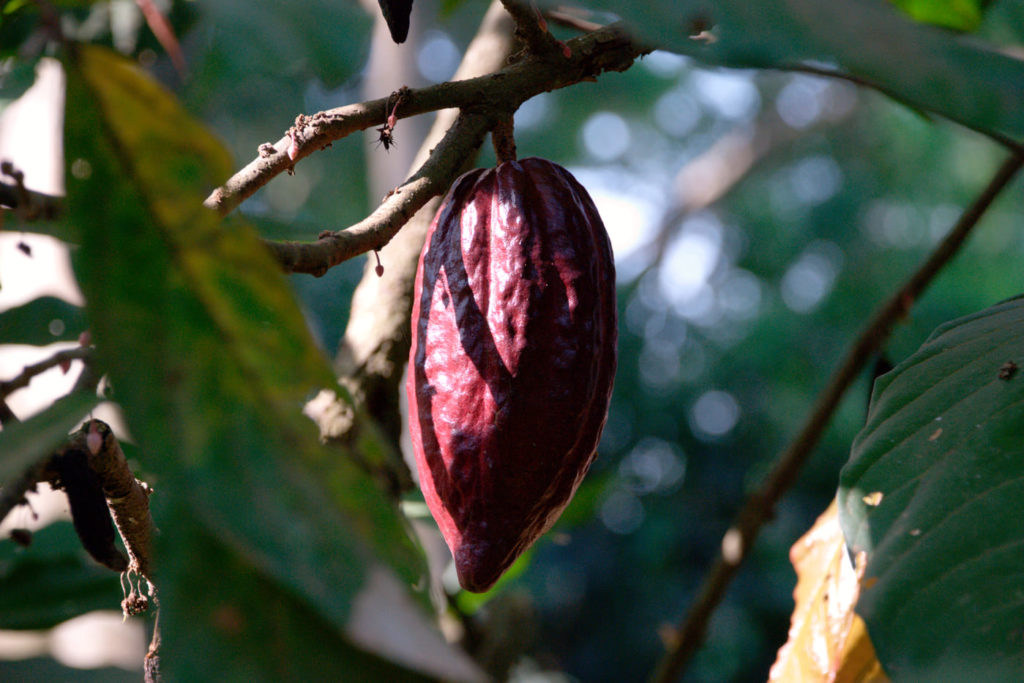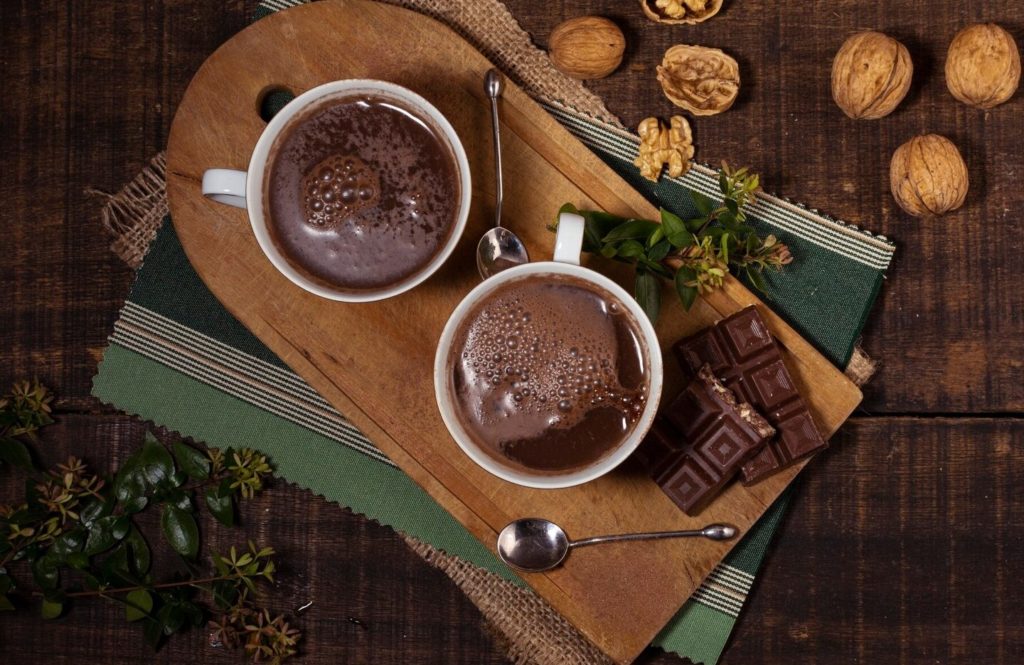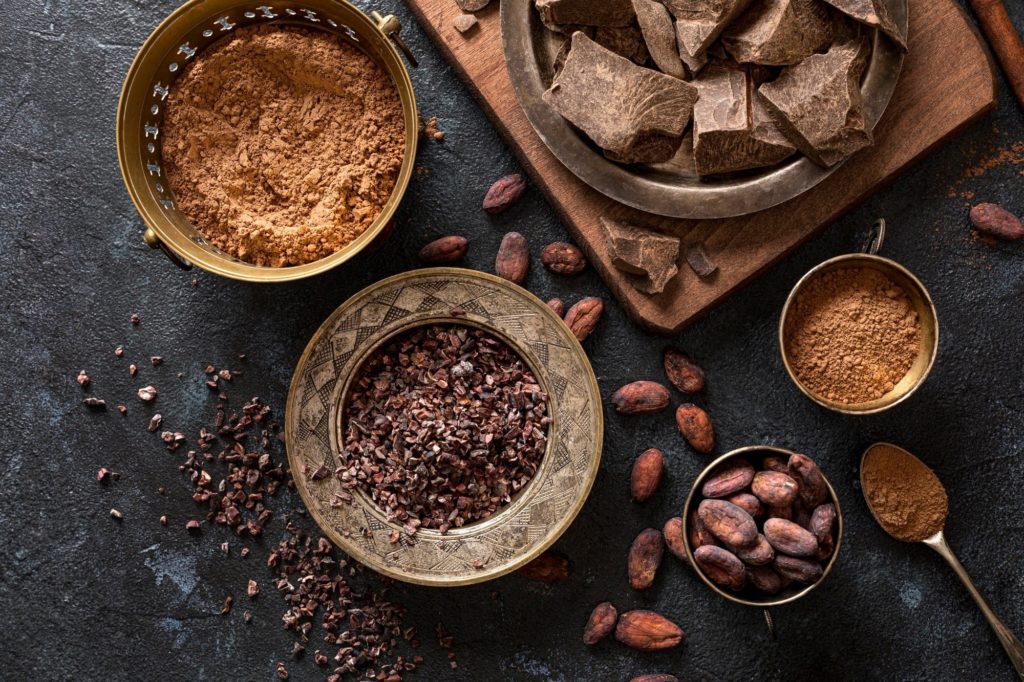Cocoa is an important raw material for the chocolate industry and is grown in many parts of the world. In this article, we take a look at the countries where cocoa is grown and the conditions required to grow cocoa successfully.
Conditions for the cultivation of cocoa
Cocoa, the source of delicious chocolate flavor, thrives best in the tropics, where climatic conditions are ideal for its growth. Regions with abundant rainfall and humidity provide the perfect habitat for the cocoa tree (Theobroma cacao). The optimum temperature for cocoa cultivation is typically between 18 and 32 degrees Celsius. However, temperatures above 32 degrees Celsius can make growing conditions more difficult and affect the development of the cocoa harvest. In addition to temperature, humidity also plays a crucial role in the cultivation process. High humidity levels create a favorable environment for the growth of cocoa trees. The pH of the soil in which cocoa is grown should ideally be between 5 and 7 to ensure optimal growing conditions. These precise environmental conditions are crucial for harvesting high-quality cocoa beans, which are the cornerstone of chocolate production. Careful management of these specific growing conditions is critical to the success of cocoa-growing regions worldwide.
Countries where cocoa is grown
Cocoa cultivation spans a wide range of countries around the world, particularly in the lush tropics, where conditions are optimal for the cocoa tree to thrive. In addition to the West African leaders Ivory Coast and Ghana, other nations also play a crucial role in the global cocoa industry. In Southeast Asia, Indonesia is characterized by a rich agricultural tradition and occupies a prominent place among cocoa exporters. Also in West Africa, Cameroon and Nigeria contribute significantly to the global cocoa supply, with their geographical location and climatic conditions providing the ideal breeding ground for cocoa production.
South America is represented by Ecuador, which is recognized worldwide not only for its impressive landscape, but also for its high-quality fine flavor cocoa. In addition to these regions, many other countries play an important role in global cocoa cultivation, including the Dominican Republic, Peru, Mexico, Guatemala, Nigeria and many others. Each country brings a unique contribution to the diversity of the global cocoa industry through its specific climatic conditions, cultivation methods and cocoa varieties.
The global cocoa industry benefits from this abundance of growing regions, with the diversity of flavors and profiles providing a rich foundation for the production of chocolate. Cultivation in different parts of the world not only helps to meet the global demand for cocoa, but also creates a fascinating diversity that makes the chocolate world a real treat for cocoa lovers.
Cocoa cultivation in West Africa
West Africa remains the undisputed giant in the global cocoa industry, contributing significantly to meeting global demand by providing about two-thirds of the total cocoa supply. Côte d’Ivoire and Ghana, as the two main players in this region, play a key role and together account for an impressive 60% of global cocoa production. This fact not only underlines West Africa’s dominant position in the world of cocoa cultivation, but also highlights the economic importance of this industry for the countries concerned.
The cultivation of cocoa has become a vital part of West Africa’s economy and acts as a major driver of employment in the region. Millions of people find work in cocoa plantations, from small farmers using traditional methods to workers in larger plantations. This labor sector not only contributes to economic stability, but also plays a social role by creating livelihoods and supporting the local population.
However, despite these economic benefits, West African cocoa-growing countries also face challenges, including social and environmental issues such as child labor and deforestation. Therefore, there have been increased efforts in recent years to make cocoa farming more sustainable and to improve working conditions in the industry. These efforts are crucial to ensure that cocoa farming is not only economically beneficial, but also socially responsible and environmentally friendly.
Cocoa cultivation in Central and South America
Cocoa cultivation in Central and South America has a long and distinguished history dating back to indigenous cultures such as the Mayas and Aztecs. If you would like to find out more about cocoa cultivation among the Mayas, click on this article. Today, countries such as Ecuador, Brazil, the Dominican Republic, Peru, Mexico, Guatemala and Colombia are important players in the global cocoa industry. In these regions, the tropical climate and fertile soils offer ideal conditions for the cultivation of the cocoa bush. In Ecuador in particular, the world’s largest producer of fine-flavor cocoa, special emphasis is placed on the quality of the cocoa varieties. Small farmers play a central role in cocoa cultivation, with many of them using traditional farming methods and sustainable practices.
However, despite the economic potential of cocoa farming, the regions face challenges such as social injustice and environmental problems, which have sparked increased interest in sustainable farming methods and socially responsible production. Cocoa cultivation in Central and South America thus reflects not only the rich history, but also current developments and efforts in the global cocoa trade.
The cocoa harvest cycle
Cocoa can normally be harvested all year round as it grows in tropical regions and therefore there is no clear season for its harvest. However, the harvest of cocoa depends on various factors, such as climatic conditions, soil conditions and the care of the plants. As a rule, the cocoa pods (the fruit of the cocoa tree) are harvested several times a year when they are ripe.
In some regions, however, the harvest time may be limited to certain months, depending on the specific climatic conditions and the type of cocoa. For example, in some countries the harvest time for certain types of cocoa may be from October to March or from April to September.
Conclusion
To summarize, cocoa cultivation is highly dependent on the region and growing conditions. The ideal conditions for cocoa cultivation are high humidity, sufficient rainfall and a constant temperature of 25 to 30 degrees Celsius. These conditions are mainly found in tropical regions such as West Africa, South America and South East Asia. However, environmental pollution, climate change and the use of pesticides and fertilizers can severely affect growing conditions. In order to create a sustainable and healthy cocoa industry, it is important to pay attention to the growing conditions and environmental pressures in the respective regions and to develop innovative solutions that benefit both farmers and the environment.




